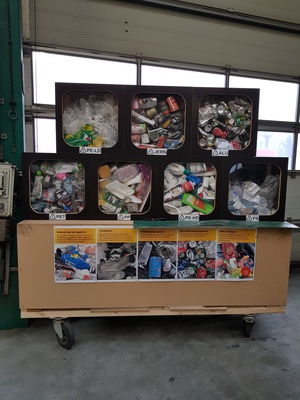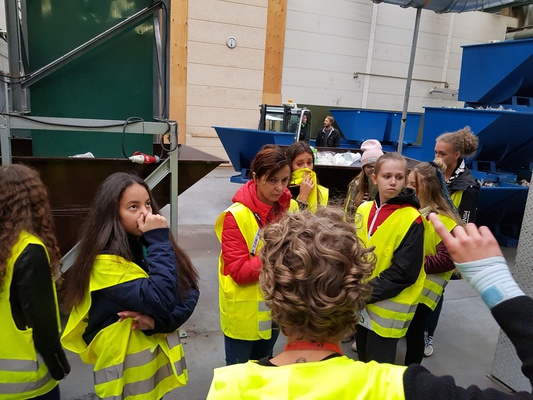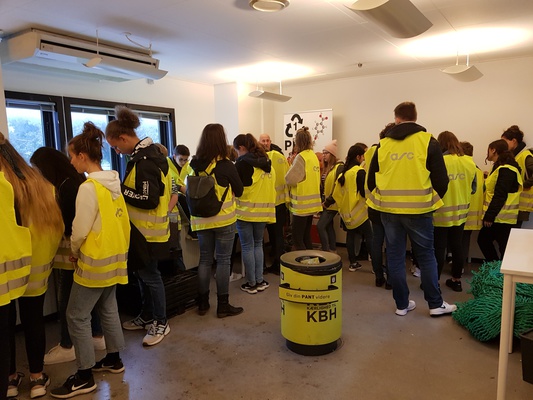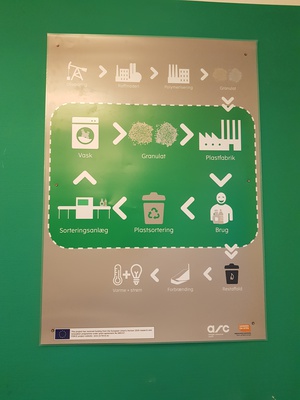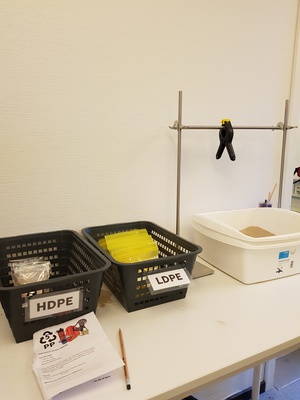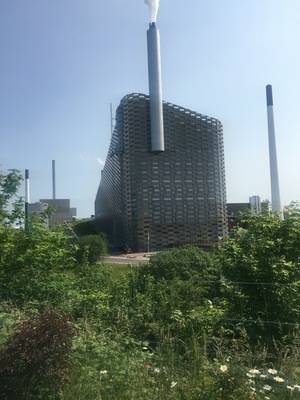 ARC- Amager Ressourcenter
ARC- Amager Ressourcenter
What is ARC and what are they doing?
- They take care of everything with waste
- They take care of all the waste, which can no longer be in use
- They send good materials for recycling or generate electricity and heat from residual waste
- They want to create a sustainable city and knowledge about waste
- They get 82,5 tons of waste every week
What happens with the waste?
First, the waste is imported from countries like England, because they don´t want to have so many plasticfields, to ARC in trucks into the receiver, who brings the waste to the next step.
The second step of the process is the manual sorting, where people are sorting out for example chemical waste. Then all the light waste will be taken out of the windblower and the other waste, which is metal, was put in the plastic waste and although this is wrong, is taken by the magnet.
The non-magnetic metal, like aluminium or mixed products, become magnetic for a short time, to stay in the shaker and fall down.
So the next and the last step for the waste is the scanner, which separated the waste into the different types of plastic.
This are the different experiements we did on our trip to ARC about the plastic types:
- (PET)
The first experiment was about durability – we had a LDPE frost bag and a piece of Pet fabric. Rubbing a piece of sandpaper on both of them, we discovered that the PET plastic is way more resistant than the LDPE. We rubbed the sandpaper 3 times on the LDPE before it broke. However, the PET fabric didn’t break even though we rubbed it more than 50 times. You can use PET for things such as car seats, clothes and sofas.
2. (HDPE)
The second experiment was about which kind of plastic was strongest. So we got two plastic bags one which was HDPE and the other one which was LDPE. We got many bottles of water that we had to put in the plastic bags and we had to see which one could carry most. The LDPE bag could carry most bottles.
The LDPE got stretched out after 21 bottles, while the HDPE broke after 20 bottles.
3. (LDPE)
We had one LDPE bag with sand and one HDPE bag with sand. Then we hung the bags on a holder and inserted a pencil through the bags. When we pierced the HDPE bag, the sand came out immediately, whereas the LDPE bag stayed firm. So LDPE is elastic and stretchy and HDPE broke under pressure.
4. (PP)
In this experiment we had a strip of cotton and a PP strip and we put both of the strips in a bowl with green water. We had to see which strip sucked up most water. The cotton strip sucked up a lot of water while the PP strip was dry, it didn´t suck any water up at all.
Why? Cotton is a plant, plants absorb water. PP is plastic which I made out of oil, oil doesn´t absorb water.
5. (PS)
So we had four different types of plastic (PS,EPS,PET,LDPE) and we got some weights. We put the plastic in the water and added weights one at a time until it sank. The PS plastic sank immediately, so did the PET plastic and the same with LDPE, but the EPS bottle could carry 120g. Our conclusion, if we had to build a raft out of plasticwe would build it out of EPS.
